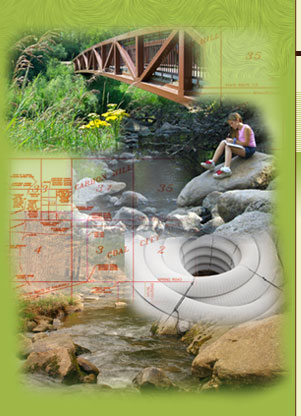DRAINAGE FACTS
In the 1800s man-made ditches were dug by farmers as a means of turning unproductive swampland into fertile farmland. Two centuries later these man-made ditches serve the same purpose of draining storm runoff. The main difference today is that while some ditches still drain acres of farmland, others drain miles of concrete.
Two laws were passed in 1879 providing landowners a means of securing proper drainage. These laws established drainage districts based on a system of assessments that permitted the districts to Include only lands benefited. The districts have the power to construct and maintain drainage improvements and to pay for these improvements with assessments on the land within the district boundaries. In 1956 legislatures passed the Illinois Drainage Code, which still informs and governs approximately 1,700 organized Drainage Districts in Illinois today.
 From Drainage, An Essential Utility and Drainage Districts, A Fundamental Federation From Drainage, An Essential Utility and Drainage Districts, A Fundamental Federation IADD publications IADD publications
HISTORY
In 1955 a group of property owners within the area of acreage drained by what was known as the Rothlisberger ditch petitioned the Court to form a drainage district, which since has been referred to as the Maine Township Drainage and Levee District. On September 1, 1955, the first commissioners were appointed and took an oath of office. The ditch, which is approximately four-and-one-half miles in length, drains nearly 3,400 acres.
|



